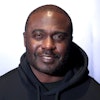Recent high-profile legal struggles of NFL running backs Ray Rice (formerly of the Baltimore Ravens) and Adrian Peterson (Minnesota Vikings) and Carolina Panthers defensive end Greg Hardy have ignited new rounds of discourse about aggression—in professional athletes and among Black males in general. Numerous think pieces and sports talk segments have tried to draw a correlation to the broader population. And, again, the question has surfaced: what is wrong with Black men?
“There’s nothing wrong with ‘Black athletes,’ as a group, that isn’t also wrong with any other very large group of human beings,” said Dr. Yago Colás, an associate professor of humanities at the University of Michigan. Colás added that “the white, middle-class public” tends to objectify Black athletes and ignore their humanity, intelligence, emotion and other mental functions and processes.
“More specifically,” he said, “we tend to reduce them to their athletic skills and, along with that, to their mere physicality. … This makes us predisposed to categorize them in animal terms as either simple-minded brutes or, at best, deeply irrational humans,” like the media did with Seattle Seahawks cornerback Richard Sherman following his team’s victory in the NFC Championship game last year.
The other problem with White America’s perception of the Black athlete, said Colás, is that “we … are racist and so filter the variety of human beings we might encounter in the set ‘Black athletes’ through racist stereotypes about Black men.” Those stereotypes include depictions of Black men as aggressive, violent, threatening, stupid, lazy and undisciplined, he said.
Dr. Louis Moore examines African-American history and sports history as an assistant professor in the history department at Grand Valley State University. He agreed with Colás’ observation that much of the problem is the filter through which these stories are told. Moore said the heightened attention on these incidents fits a popular narrative in this country.
“America has always linked Blacks to criminality and the Black athlete is the most visible Black person in America,” Moore said. “So, in many ways, these transgressions fit a narrative about Black people and supposed Black pathology. What we see in these recent cases … is also part of the lie that the Black family is dysfunctional.”















